Private First Class Yaichi Miyashiro
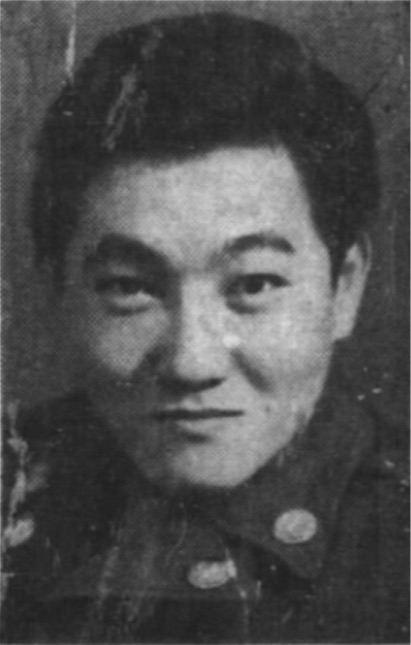
- Unit: 71st Signal Service Battalion, Company A
- Date of Birth: September 20, 1927
- Entered the Military: January 19, 1948
- Date of Death: March 11, 1995
- Hometown: Kukui’ula, Kōloa, Hawai'i
- Place of Death: Oahu, Hawai'i
- Cemetery: Section Court 3-J, Row 500, Site 542. National Memorial Cemetery of the Pacific, Honolulu, Hawai'i
Mililani High School
2017-2018
Before the War
Early Life
In the early 1900s, Yaichi Miyashiro’s parents, Teiki Miyashiro and Oshi Agina, migrated from Okinawa, Japan to Kōloa, Kauai, Hawaiʻi, as employees of the McBryde Sugar Company, as laborers. Together the couple had six children, including twins Tomoyoshi and Yaichi. Tragically, Oshi Miyashiro died in 1939 leaving her husband and eldest daughter Amy to raise the children. Mr. Miyashiro worked to provide his children the best education possible at Kōloa School.
The World War II Homefront
Residents of Kauai were notified of the bombing of Pearl Harbor over the radio the morning of December 7, 1941. The government declared martial law and residents were given ration cards for food and gas. Almost 40% of Kauai’s population consisted of Japanese plantation workers. Round-ups occurred and some Japanese Kauai residents disappeared into internment camps on the island of Oahu.
A large number of young Japanese-American men volunteered to fight. Miyashiro’s older half brother, Private First Class Masa Agina, received a Silver Star serving with the segregated 442nd Infantry Division. At home a lack of labor hampered food harvesting. Sugar plantations hired high school students for light canefield work.
During the war, Miyashiro attended a training school on Oahu. Afterwards he returned to Kauai to work at the American Factors lumber yard. He separated lumber by hand into piles by size.
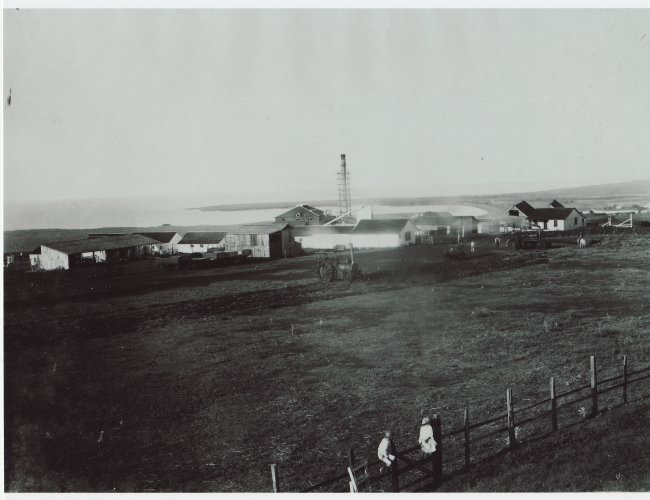


Military Experience
Occupation of Japan
After the defeat of Japan in World War II, the United States led the Allies in the occupation and rehabilitation of Japan. Miyashiro’s oldest brother, Private First Class Masa Agina, returned home, but three more Miyashiro brothers joined the U.S. Army. In December 1945, Miyashiro’s twin, Tomoyoshi, enlisted in the U.S. Army and served as part of the occupation Army in Japan until 1948. Returning to Hawaiʻi, Tomoyoshi worked as a sugar cane worker but re-enlisted in less than a year later. Yaichi Miyashiro enlisted January 1948 and his younger brother, Daniel, enlisted in December that same year. Both served in Japan. Daniel was stationed with the Etajima Command School, Hiroshima, Japan, with the 24th Infantry Division, 19th Infantry Regiment, Heavy Mortar Company.
24th Signal Company
After basic training, Private First Class Yaichi Miyashiro sailed for Japan via Guam on the USAT General William Weigel on June 21, 1948. He arrived in Japan on July 12, 1948 and was stationed with the 24th Infantry Division, 24th Signal Company in Fukuoka, on the Japanese island of Kyushu. He received additional training in the Signal Corps at Keio School Command of the Eighth Army. In August 1949, Miyashiro transferred to the 71st Service Battalion in Tokyo, Japan, with Company A of the 71st Signal Service Company.
Brothers Fighting North Koreans
Shortly after North Korea’s invasion of the south all three Miyashiro brothers were transferred from Japan to Korea.
Daniel Miyashiro’s unit faced the advancing North Korean Army. He was listed as Missing in Action on July 19, 1950, when his location near the Kum River was overrun.
Yaichi’s twin, Tomoyoshi, arrived with the 5th Regimental Combat Team July 31. On August 4, he suffered a gunshot wound at Fox Hill and was transferred to a hospital in Japan. In a letter home he wrote, “I expect to be leaving with two weeks and am asking to rejoin my buddies again at the front… I hope all of you are fine and my other two brothers are also doing O.K. When I get to the front again. I am going to look both of them up.” Not long after rejoining the 5th Regimental Combat Team RCT, Tomoyoshi died manning a roadblock in Yang-ni October 2, 1950.
When Yaichi transferred from Japan to Korea, his unit operated the telephone and teletype equipment. The men encountered signal problems and the rugged terrain made it difficult to maintain a secure communication system. On October 15, 1950, the 229th Signal Operation Company was attached to the 25th Infantry Division.
Removed from the Front
By December 1950 the U.S. Army determined two of the three Miyashiro brothers were killed in battle. On December 25, 1950, Yaichi received orders to return to Japan in accordance with a U.S. Army policy based on compassionate action. Yaichi served the remainder of his service with the 71st Signal Service Company in Tokyo, Japan.
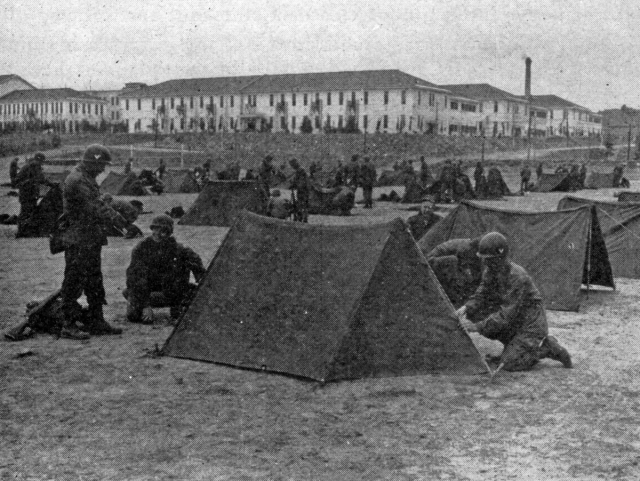

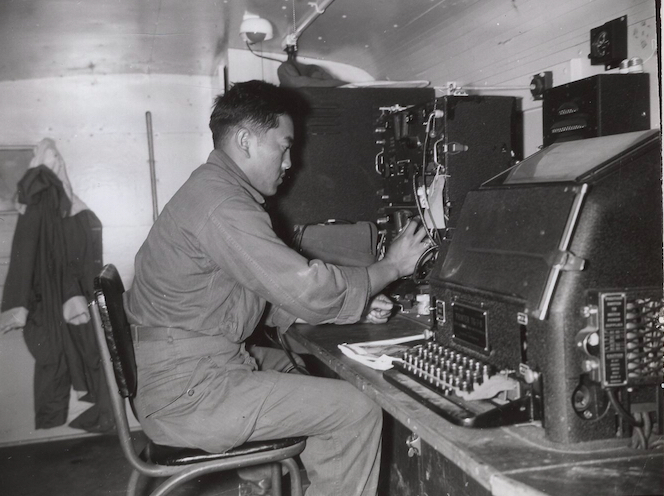
Veteran Experience
Return to Hawai’i
Yaichi Miyashiro left Japan for Hawaiʻi in October 1951, and was discharged from the U.S. Army on December 14, 1951. He remained on the island of Oahu.
Miyashiro married a woman from Japan, had no children of his own, and lived a private life in Honolulu. He worked as a plumber for Oahu Plumbing and Sheet Metal until retirement. According to his sister-in-law, he felt family was important and spent quality time with his nephews over the years. Yaichi Miyashiro died on March 11, 1995. Today family members continue to remember him with flowers on his birthday.
Commemoration
The Miyashiro brothers served their country with honor and paid a high price with the loss of two brothers. Three of the five Miyashiro brothers returned to their parents’ homeland to participate in the rebuilding of Japan. Each found themselves rushed to the front line in the Korean War to protect the democratic ideals their own country of birth held dear.
Both Daniel and Tomoyoshi Miyashiro are buried at the Kauai Veterans Cemetery in Hanapepe, Hawaiʻi, on the island of Kauai. Yaichi Miyashiro is buried at the National Memorial Cemetery of the Pacific in Honolulu, Hawaiʻi, on the island of Oahu.
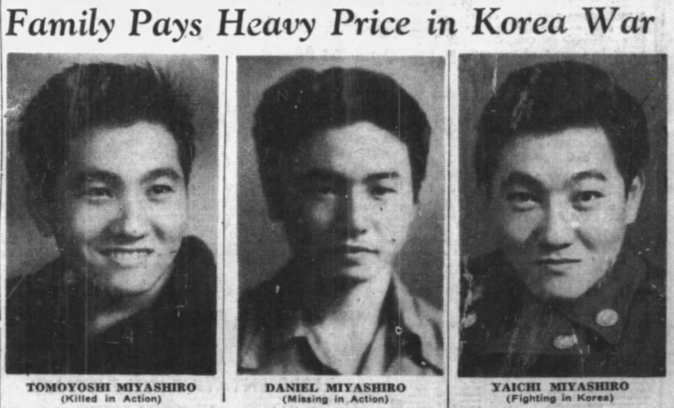
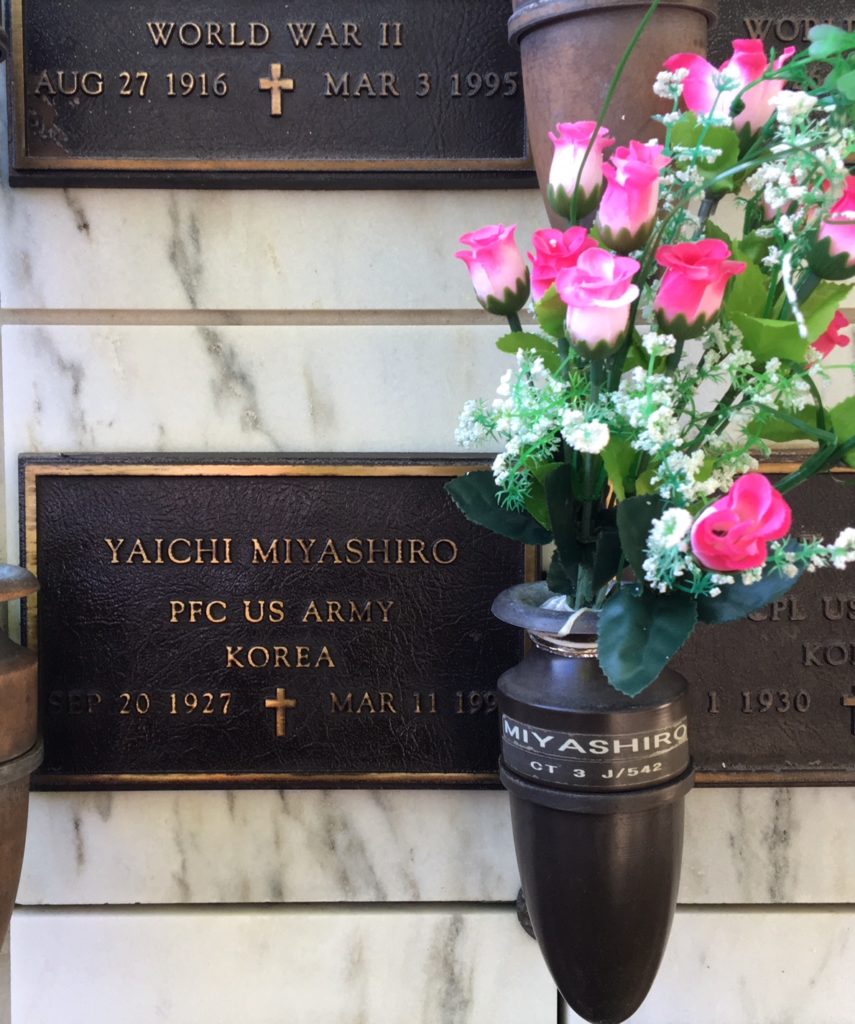

Bibliography
Appleman, Roy E. South to the Naktong, North to the Yalu (June–November 1950). Washington D.C.: Center of Military History, 1992. Accessed June 30, 2018. history.army.mil/html/books/020/20-2/CMH_Pub_20-2.pdf.
Baldovi, Louis. A Foxhole View: Personal Accounts of Hawaii’s Korean War Veterans. Honolulu: University of Hawaiʻi, 2002.
Chang, Sergeant First Class Al. RTT Receiver at Signal Headquarters, EUSAK. Photograph. November 4, 1950. National Archives and Records Administration (351952). Image.
Daniel T. Miyashiro, Official Military Personnel File, Department of the Army, RG 319, National Archives and Records Administration — St. Louis.
Daniel T. Miyashiro. U.S., Headstone Applications for Military Veterans, 1925–1963. Digital Images. http://ancestry.com.
“Family Pays Heavy Price in Korea War.” Honolulu Star-Bulletin. November 2, 1950. Newspapers.com (17939143).
Gilman, Laselle. “Garden Isle Deep In War Work, Spares No Time To Finish Job.” The Honolulu Advertiser. June 18, 1943. Newspapers.com (22051005).
Guyette, SFC Albert. 24th Division Checks the Communications in Waegan, Korea. Photograph. September 21, 1950. National Archives and Records Administration (348930). Image.
Hawaii Territory. Koloa, Kauai. 1920 U.S. Census. Digital Images. http://ancestry.com.
Hawaii Territory. Koloa, Kauai. 1930 U.S. Census. Digital Images. http://ancestry.com.
Hawaii Territory. Koloa, Kauai. 1940 U.S. Census. Digital Images. http://ancestry.com.
“Kauai Man Mourns Death of Son in Korea War; Another Missing.” Honolulu Star-Bulletin. November 11, 1950. Newspapers.com (17939336).
“Large Groups Leave on Two Army Vessels.” Honolulu Star-Bulletin. June 23, 1948. Newspapers.com (18659250).
Lieberberg, Lt. Col. George. “Part IV Signal Corps: 2. Answers Not in Textbooks.” Interview. In Combat Support in Korea: The United States Army in the Korean Conflict, by John G. Westover. Washington D.C.: Center of Military History United States Army, 1987. Accessed May 24, 2018. http://www.koreanwaronline.com/history/Support/Support1_4.htm.
McAdoo, Albert J., and James E. Marshall. The 5th RCT in Korea: The Pusan Perimeter Battles, 1950. Tampa: CreateSpace Independent Publishing Platform, 2012.
McBryde Sugar Plantation. 1885. Photograph. 1896–1960, 11.0, Eleele, Kauai. Hawaiian Sugar Planters’ Association Plantation Archives. University of Hawaii at Manoa Library, Honolulu, HI.
Mossman, Billy C. Ebb and Flow, November 1950–July 1951. Washington, D.C.: Center of Military History, United States Army, 1990. Accessed May 24, 2018. history.army.mil/books/korea/ebb/fm.htm.
Nakatsuka, Lawrence. “Service Flags Help Tell Story of How Garden Isle Has Gone to War.” Honolulu Star-Bulletin. July 24, 1944. Newspapers.com (22048701).
Ninth Corps War Diary and Annexes Sept 1950; Records of the Army Air Forces, World War II Combat Operations Report 1941–1946, Record Group 407 (Box 1760); National Archives at College Park, College Park, MD.
Park, Sarah. “Hawaii’s Role in Korean War Is Story of Heroism and Sacrifice.” Honolulu Star-Bulletin. November 22, 1950. Newspapers.com (268948458).
Pierce, Captain John W. “Part IV Signal Corps: 2. Answers Not in Textbooks.” Interview. In Combat Support in Korea: The United States Army in the Korean Conflict, by John G. Westover. Washington DC: Center of Military History United States Army, 1987. Accessed May 24, 2018. www.koreanwaronline.com/history/Support/Support1_4.htm.
Records for Daniel T. Miyashiro; Korean War Casualty File, 1950–1953 [Electronic File], Record Group 407; National Archives at College Park, College Park, MD [retrieved from the Access to Archival Databases at aad.archives.gov/aad/, March 19, 2018].
Records for Tomoyoshi Miyashiro; Korean War Casualty File, 1950–1953 [Electronic File], Record Group 407; National Archives at College Park, College Park, MD [retrieved from the Access to Archival Databases at aad.archives.gov/aad/, March 19, 2018].
Records for Tomoyoshi Miyashiro; World War II Army Enlistment Records, 1938–1946 [Electronic File], Record Group 64; National Archives at College Park, College Park, MD [retrieved from the Access to Archival Databases at aad.archives.gov/aad/series-description.jsp?s=3360&cat=WR26&bc=,sl, December 1, 2014].
“Smiling Veterans Return Home to Homes.” Honolulu Star-Bulletin. July 15, 1946. Newspapers.com (21429146)
Smith, Ray. “A Look Back in History: Kauai Residents Impacted by 1942 Japanese Bombing of Pearl Harbor.” Hawaii Reporter. April 23, 2012. Accessed July 1, 2018. www.hawaiireporter.com/a-look-back-in-history-kauai-residents-impacted-by-1942-japanese-bombing-of-pearl-harbor/.
Soldiers in Kyushu Practice Tent Pitching. Photograph. U.S. Army. Accessed July 27, 2018. www.army.mil/article/4604/a_soldier_in_kyushu.
Sterner, Doug, ed. “Masa Agina.” The Hall of Valor Project. Last modified 2018. Accessed May 26, 2018. valor.militarytimes.com/hero/25464.
Striley, Captain Wayne A. “Part IV Signal Corps: 7. Mukden Cable.” Interview. In Combat Support in Korea: The United States Army in the Korean Conflict, by John G. Westover. Washington DC: Center of Military History United States Army, 1987. Accessed May 24, 2018. www.koreanwaronline.com/history/Support/Support1_4.htm.
“Ten Hawaii Soldiers Arrive On Ships With More Japanese POWs.” Honolulu Star-Bulletin. January 12, 1946. Newspapers.com (21429085).
Tomoyoshi Miyashiro, Official Military Personnel File, Department of the Army, RG 319, National Archives and Records Administration — St. Louis.
Tomoyoshi Miyashiro. U.S., Headstone Applications for Military Veterans, 1925–1963. Digital Images. http://ancestry.com.
Tomoyoshi Miyashiro. U.S., WWII Draft Cards Young Men 1940–1947, The National Archives in St. Louis. Digital Images. http://ancestry.com.
Westover, John G. Combat Support in Korea: The United States Army in the Korean Conflict. Washington DC: Center of Military History United States Army, 1987. Accessed May 24, 2018. history.army.mil/books/korea/22_1_int.htm.
“With Uncle Sam.” The Daily Herald. October 22, 1948. Newspapers.com (22052224).
“Yaichi Miyashiro.” National Cemetery Administration Grave Locator. Accessed September 22, 2018. gravelocator.cem.va.gov/index.html.
Yaichi Miyashiro, Official Military Personnel File, Department of the Army, RG 319, National Archives and Records Administration—St. Louis.
Yaichi Miyashiro. U.S., City Directories, 1922–1995. Digital Images. http://ancestry.com.
Yaichi Miyashiro. U.S. Department of Veterans Affairs BIRLS Death File, 1850–2010. Digital Images. http://ancestry.com.
Yaichi Miyashiro. U.S., Social Security Death Index, 1935–2014. Digital Images. http://ancestry.com.
Yaichi Miyashiro. U.S., WWII Draft Cards Young Men 1940–1947, The National Archives in St. Louis. Digital Images. http://ancestry.com.

